
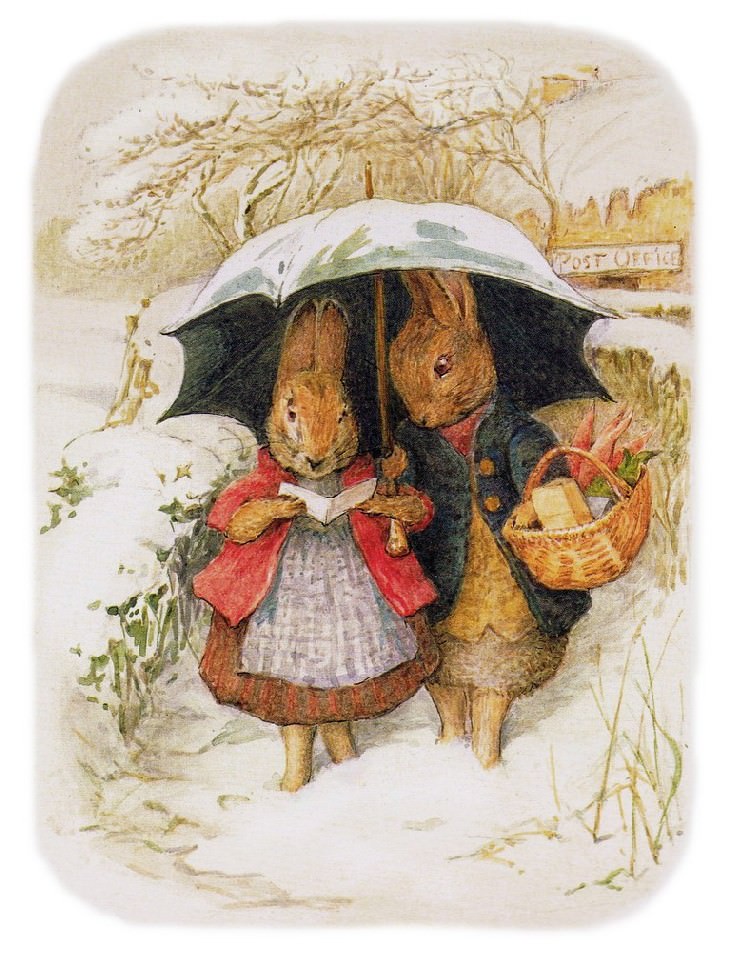
Beatrix was born into a wealthy British family in London on July 28, 1866. Her parents were a very conservative and religious couple, as was expected from everyone in the Victorian era.
Beatrix was cut off from other kids, as her parents believed that other children would be a bad influence on her and her younger brother Bertram.
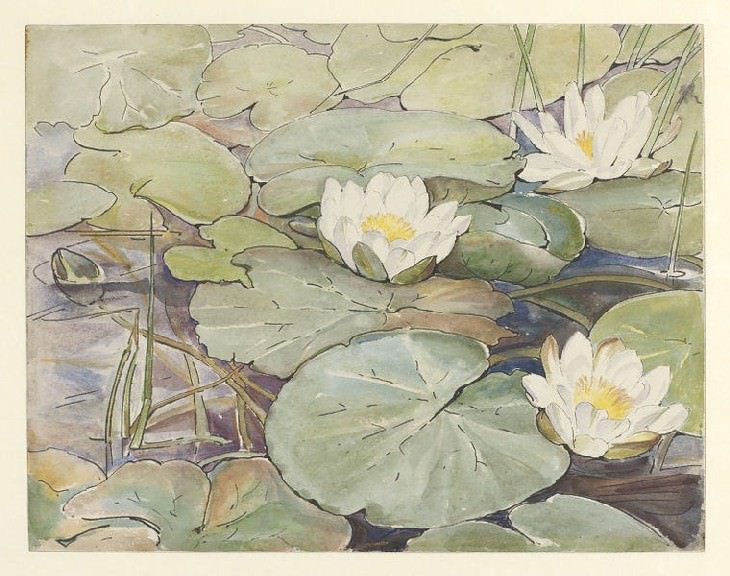
Three white water lilies (1906)
On the bright side, their parents encouraged Beatrix and Bertram’s interest in nature. The children were homeschooled by 3 nannies. Beatrix and Bertram kept a variety of pets, such as rabbits, mice, bats, and a hedgehog, as well as a collection of butterflies and other insects.
The kids studied and drew these animals, as well as the nature surrounding them, especially during their summer stay in the Scottish countryside. This love of nature and animals was one of the main themes not only in her life but especially in her art.
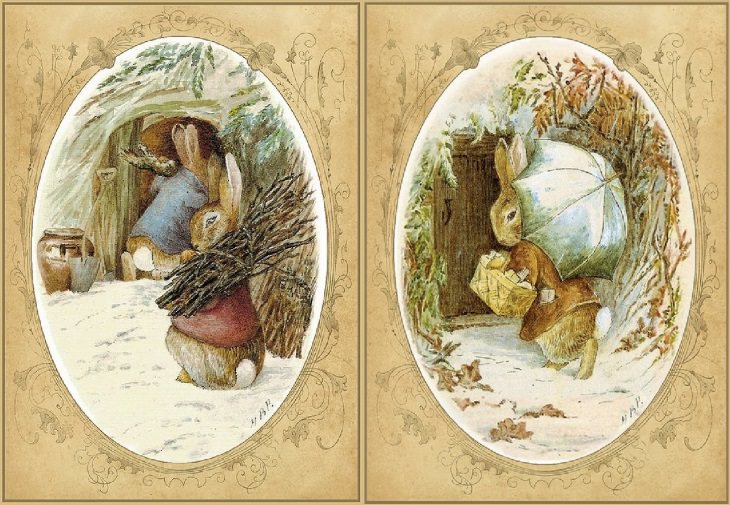
Winter Cards (1890's)
Speaking of which, art was definitely Beatrix’s second lifelong love.
By the age of 10, she could draw meticulous and very realistic drawings of plants and animals. Here is one of her early illustrations below.
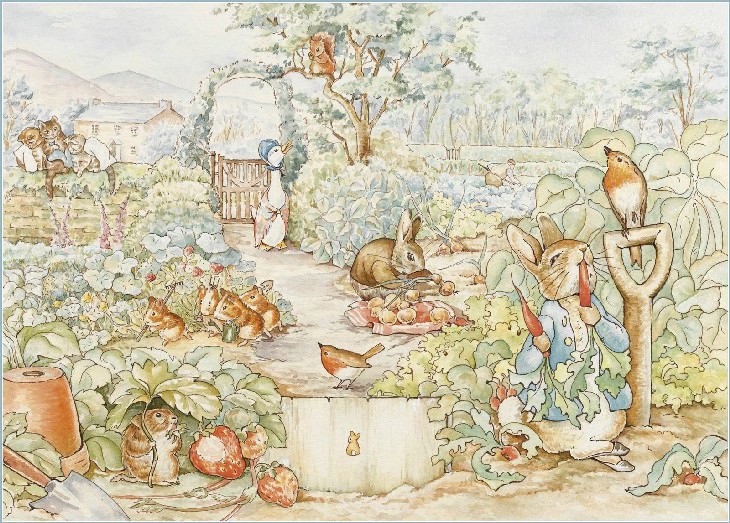
Six Watercolour scenes (1980-90)
One of her first models was her pet rabbit called Benjamin Bouncer, and, as you know, her affection to rabbits would ultimately lead her to create one of the best-selling children's books of all time, Peter the Rabbit, as well as several other tales about cottontails...
First Career Attempts
By early adulthood, Beatrix was becoming more and more scientifically-minded. Unfortunately, during the Victorian age women rarely attended university, and so she was forced to educate herself. Beatrix was interested in all natural sciences and astronomy, but especially botany.

The Tale of Ginger and Pickles - Ginger & Pickles' Shop (1909)
She also collected and studied fossils and archeological artifacts, as well as insects. By 1890, she centered her scientific interests on the study of fungi, mycology.
Beatrix executed very detailed illustrations of different species of fungi, many of which are featured in biology books to this day. You can see one of such illustrations on the following picture.
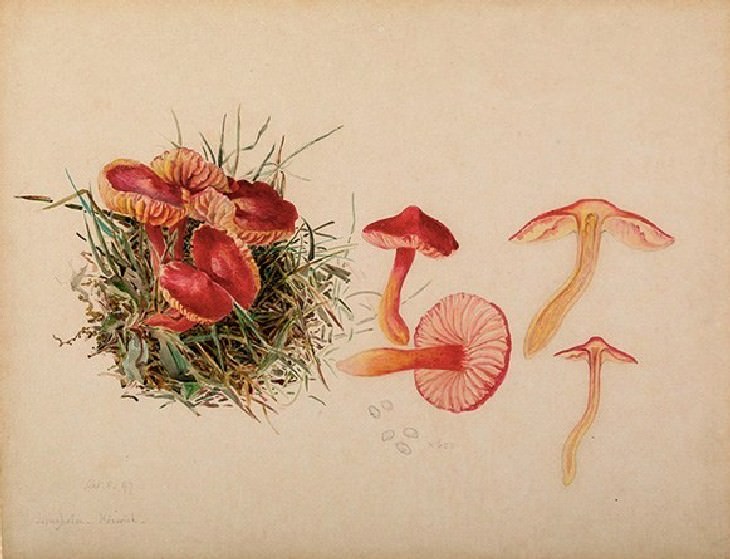
Mushroom Illustration
In 1892, Potter met Charles McIntosh, a famous naturalist, and fellow mycologist. He helped her gain access to scientific studies on taxonomy and supplied her with specimens to illustrate.
By 1895, Beatrix evolved so much that she even began making microscopic drawings of fungus spores (the agarics) and ultimately even wrote a paper on the germination of fungi.
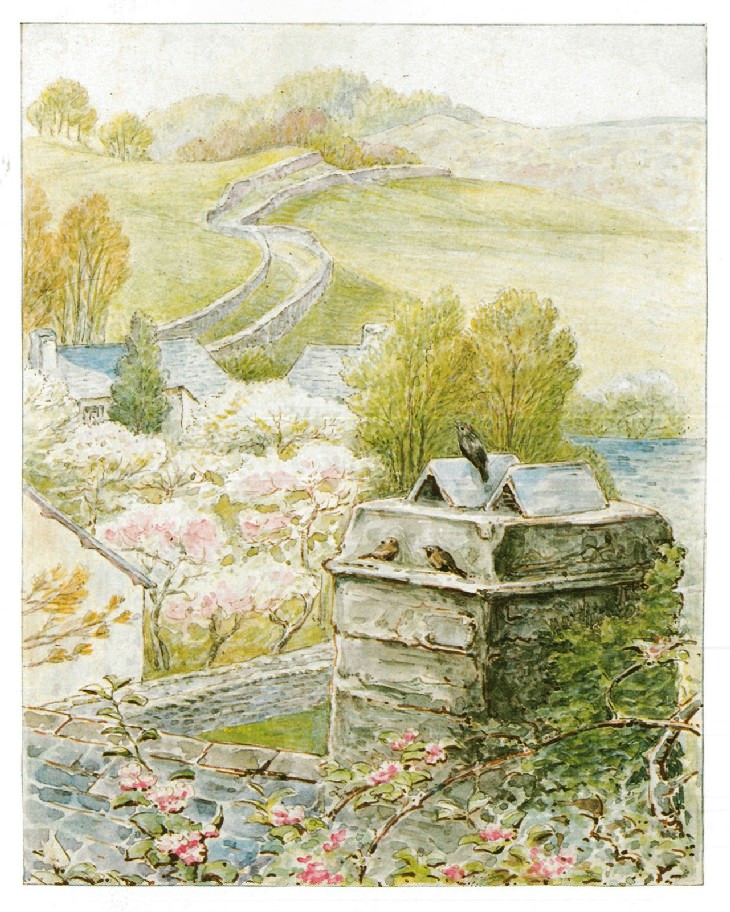
Samuel Whiskers , 1908 Bird's-eye view from Hill Top Farm
Unfortunately, she had no right to publish or present a scientific paper, so the study was published under the name of James Messe, another mycologist colleague.
She continued her research for a few more years, but she continued facing discrimination in the scientific community and was forced to change her profession.

We love our little garden. Cecily Parsley's Nursery Rhymes (1922)
Apart from her interest in natural sciences, Potter had always loved reading fairy tales and made her own little illustrations to famous fairy tales, such as Cinderella and Alice in Wonderland, substituting the main characters by animals that dressed up and acted like humans.
Little did she know, but this ability to make animals behave and look just like the human character while still retaining their cuteness would ultimately become the signature feature of her illustrations.
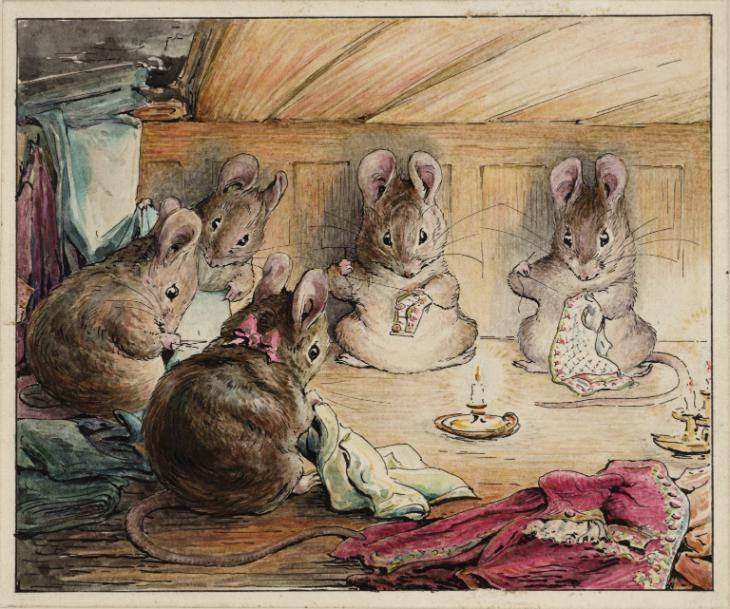
The Tailor of Gloucester' (1903) The Mice Sewing the Mayor's Coat
But let’s get back to Beatrix’s life for a second. It was 1901 and her failed career as a naturalist had become apparent.
Instead of giving up, Beatrix decided to gamble and turn her hobby of making holidays cards and letters with cute animal illustrations frequently sent out to family members into a career. She took a draft of the story about Peter the Rabbit and made it into a small children’s book with adorable illustrations.
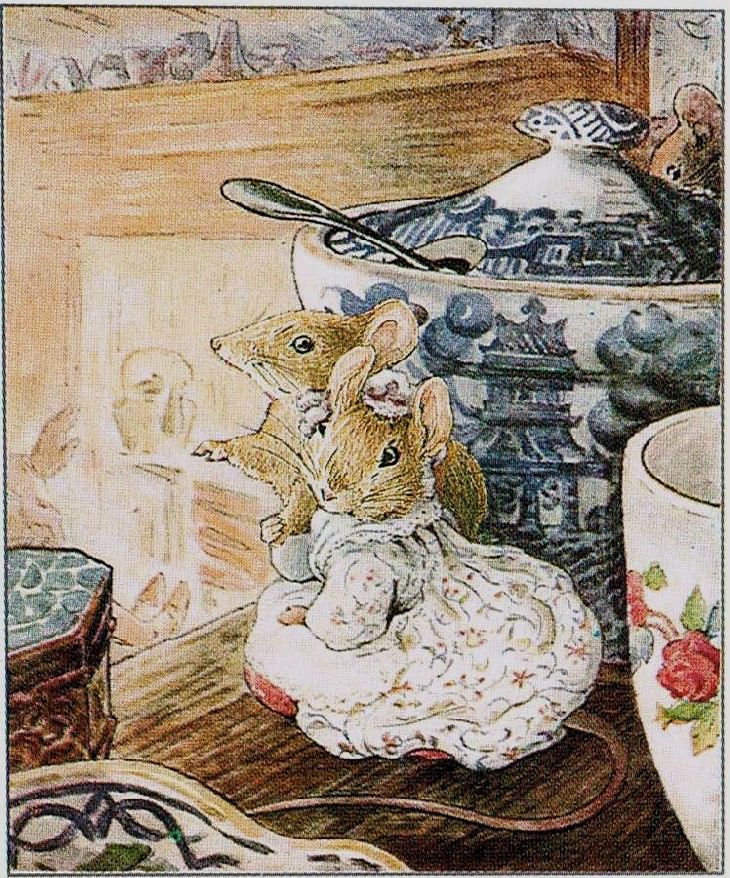
The Tailor of Gloucester (1903) The little mice listened to the tailor
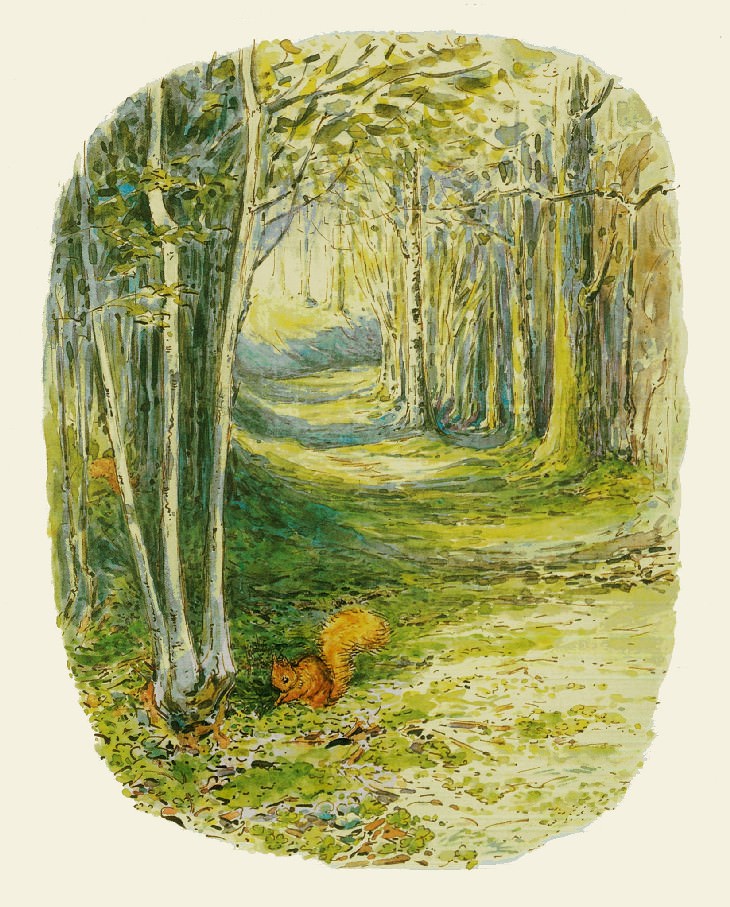
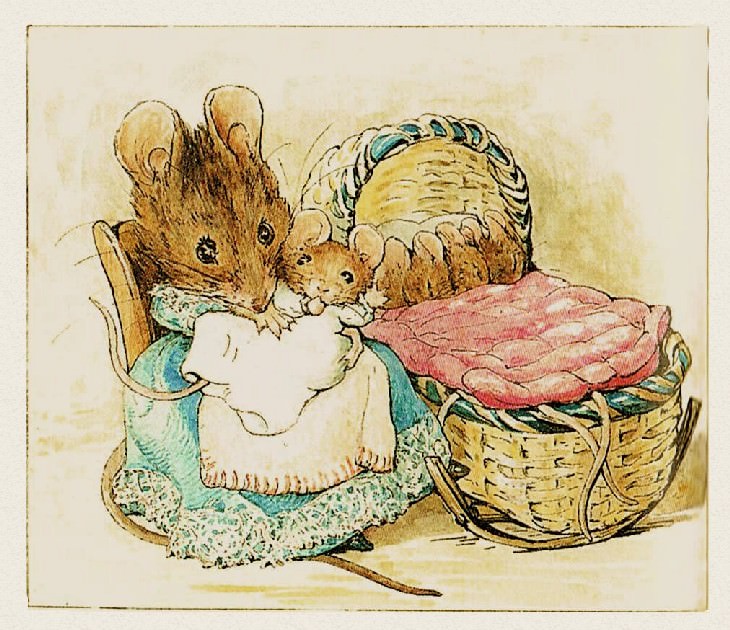
The various characters from her books also reflected the animals’ true behavior in nature, which Beatrix continued to study, even when said behavior isn’t very flattering.
For example, Tommy Brock, a badger from the story Tommy Brock and Mr.Tod is described as “a short, bristly person with a grin”, who is a ferocious carnivore and recklessly destroys the habitat of other animals.
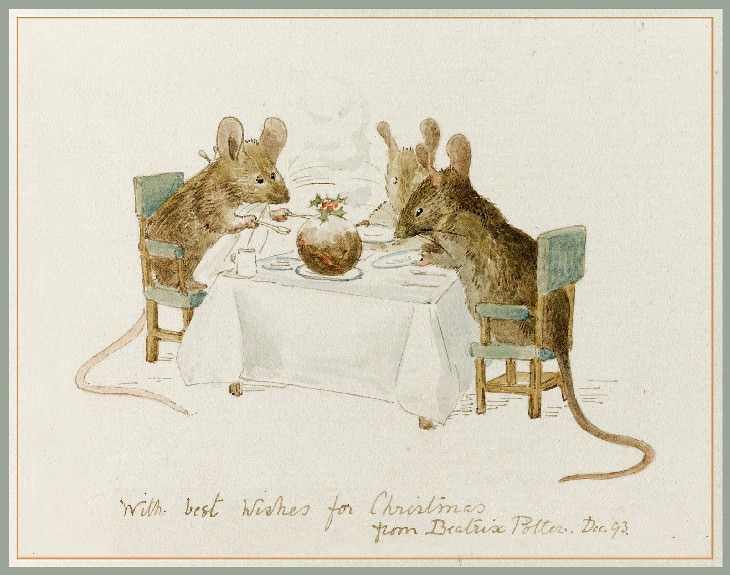
Three mice seated at a table about to devour a Christmas pudding (1893)
This description is very true to nature: badgers are known for ripping apart their prey and digging up other animals’ burrows and destroying birds’ nests.
This kind of scientific precision is visible in Potter’s drawings as well. Just look at the detailed embroidery and clothing the animals wear. They were meticulously re-drawn from real-life museum expositions.

The Tailor of Gloucester (1903) Simpkin Goes Out
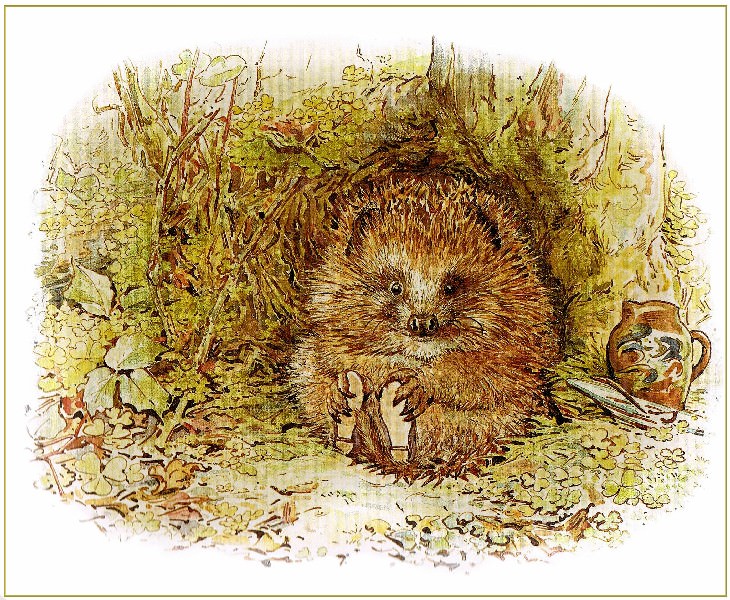
Image source for all pictures: plum leaves